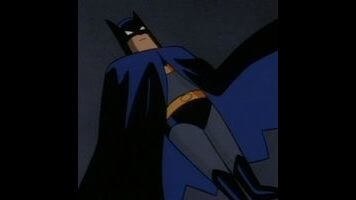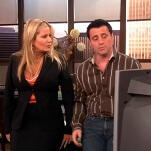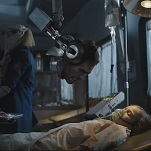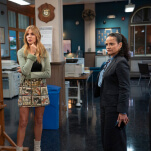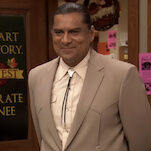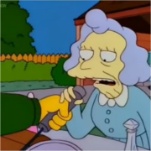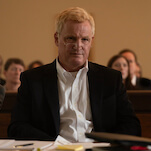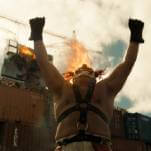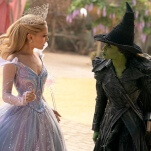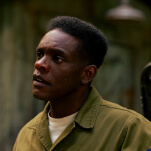Let's talk about the Joker.
In fact, let's talk about any iconic character, any outsized fictional character resonant enough to call a classic. When I say that Batman is one of my all-time favorite fictional characters, I'm not really talking about a specific portrayal of Batman. Though I have some in mind (the Denny O'Neil Batman of the '70s, the Batman of Year One), I really mean a conception of the character. And this is key: it doesn't even have to be a conception of the character that's ever actually been portrayed. Many people, for example, worship a God that has no real similarity to the way God is portrayed in the Bible or other "primary sources." They like the idea of God, and they carry around with them an image of the way God is that suits them, regardless of whether or not it has any resemblance to the "real" God. It's the same thing with Batman: the Batman I love doesn't necessarily come from any single issue of Batman or any single media portrayal. It's a character I more or less developed in my mind based on the appealing aspects of all the media portrayals I've ever seen. Most people do this, and the Batman I love may be vastly different from the Batman you love, while both of them may be at odds with any Batman that's ever actually appeared in comics, movies, TV, and so on.
The same is most definitely true of Batman's most resonant villain, the Joker. I love the Joker as a villain almost beyond reason; he's in my pantheon of all-time great fictional characters. But my conception of him is an amalgam of all sorts of portrayals of the character. The Joker's persona has veered wildly over the years, from the murderous schemer with the unforgettable face (drawn from the disturbing 1928 Expressionist movie The Man Who Laughs), to the campy crime boss of the '60s TV show, to the bloodthirsty psychotic obsessive of The Killing Joke, to the filthy, twitching force of chaos in Christopher Nolan's The Dark Knight. Which Joker you prefer depends on how you perceive the character's strengths; your conceptions of those strengths inform your choice, and how you react to any portrayal of him depends on what characteristics you want to see brought out.
Personally, I've always liked a Joker that straddles the line between deranged prop comic and psychotic lunatic. Aside from the visual brilliance of the Bob Kane original, I've always disliked the idea of the Joker as a master criminal. I like a Joker who sees money as a means to an end rather than a goal itself, and that's one reason I like the Killing Joke recounting of his origins, because it makes his time as gang boss the Red Hood into just another absurd gag. The Joker-as-force-of-nature thing is a bit too cerebral for me (the Joker is a psychological terror, not a philosophical one like R'as al-Ghul); straying too far to the psychotic side makes him less interesting and straying too far to the comedic side makes him less threatening. A balance between those two extremes forms the Joker I carry around, and that's the one I want to see the most.
With all due respect to Heath Ledger's phenomenal performance in The Dark Knight—and it was a revelation—that's why I've always liked Jack Nicholson's oft-maligned performance as the Joker in the first Tim Burton Batman. I have very mixed feelings about much of the movie, but I thought Nicholson absolutely nailed the Joker: a combination of self-absorbed showman, forever laughing at his own corny jokes, and heartless killer, casually murdering even his own henchmen out of convenience, vengeance, or pique. And that's largely the conception of the Joker that was used in Batman: The Animated Series, as we'll see in this week's episode, "Christmas With The Joker".
It's hard to believe now, because he's so established as a reliable, versatile and talented voice actor, but Mark Hamill wasn't always thought of that way. When he signed on to play the Joker, he'd done only a limited amount of voice work and was in a lengthy post-Star Wars career slump. But he took to the role so well, he defined the Joker (whose arch, sneering voice sounds almost nothing like most of Hamill's other roles) as much as any actor who's tried the part. Casting Hamill as the Joker was an absolute coup, one of the first, but hardly the last, scored by the show's hugely talented casting director, Andrea Romano. Not realizing that voice acting is a special talent with its own particular skill set, a lot of producers of animation, especially of big-budget movies, simply hire a high-profile Hollywood actor with a recognizable name to voice their characters, regardless of how well that actor's voice suits the role. Romano never makes that mistake. Sometimes her voice actors are name-brand, and other times they're unknowns, but they're always hired based on how well they will inhabit the role. Her good judgment paid off in spades, as to my mind, Hamill has become one of the best voice actors in the business and is the definitive voice of the Clown Prince of Crime.
This episode (second in production order, but aired much, much later) sees a change in the creative team. Kent Butterworth, a less sure-handed director than Kevin Altieri, is behind the camera, and TV veteran Eddie Gorodetsky takes the writing reins. The plot is a basic hero vs. villain set-up: the Joker, free once again to pursue his dishonorable profession, ruins Gotham's Christmas Eve by kidnapping "the awful Lawful Family"—Commissioner Gordon, reporter Summer Gleeson, and Det. Bullock—and threatening to murder them at midnight if Batman can't stop him. It's a simple idea, and it's pretty simply executed; there's nothing emotionally, morally, or psychologically complex at work here. Speculation about the Joker's role as Batman's classical nemesis will have to wait for future episodes. (Although the script does repeatedly remind us that the Joker, like Batman, has no family of his own.)
But this is also a holiday episode, however twisted, and though it was produced in an awkward order, it comes at a convenient time for us here at TV Club Classic. Holiday episodes are when TV shows traditionally let their hair down and allow their characters a chance to mix it up a little, to get to know one another while engaging in a familiar, comforting situation. That's what this episode feels like to me: a comfort. It's not brilliantly animated or deeply insightful, but it's a classic old-school Joker routine cleverly framed (the device of having the Joker take over Gotham's airwaves and put on his own sick version of a Christmas special works like a charm, right down to the Joker's Perry Como sweater ensemble) and well-executed. It's light and breezy, or as light and breezy as a story with a "diseased maniac," as Gordon calls him, can get, and that's what holiday specials ought to be.
"Christmas With The Joker" also gives us our first look at Robin (voiced by Loren Lester, who's been showing up on HBO's Hung lately). He'll become a central character as the show goes on, and although he doesn't have much to do this time around outside the action sequences, we do get some glimpses of what the show intends for him. He's a bit older and more mature than some conceptions of Robin, a fact that's reflected in his attitude and his costume, and he already makes some gestures towards humanizing Batman. I've always felt that a key element to the character of Dick Grayson is to prove to Batman that someone could undergo the same trauma that struck Bruce Wayne and not let it consume and destroy him; Robin represents, to Batman, what he could have been, and that's a vital role. It's good to see it being laid in so quickly, but as we discussed last time out, one of the strengths of Batman: TAS is that it knew what direction it wanted to take things right from the start.
I can't rate this episode too highly, since it's pretty inconsequential and technically not very well-executed, especially compared to what came before it. It's also got a lot of padding. It could easily be 15 minutes and far tighter. No Shirley Walker this episode either, and the music suffers as a result; it's pretty lackluster. And Summer Gleeson, a character that never did much for me, has nothing to do here other than be menaced. But it's a funny, charming piece of work, by no means a failure, and it provides some memorable lines and the beginning of two relationships—Batman and the Joker and Batman and Robin—that are essential to the show's development. It does what it needs to do quite well, and for that reason, I can't rate it too poorly, either. If nothing else—and it has plenty else, if its virtues are small instead of great—it's a fun component of a Christmas TV marathon.
Rating: B
Stray Observations:
- The Joker's escape from Arkham is pretty hokey and not that well-animated, but it has its moments: He gets to sing that 3rd-grade favorite, "The Batmobile Song," and if you look closely during the scene, you'll notice him bidding a friendly adieu to a fellow inmate who's a ringer for Charles Manson.
- The early scenes where Batman tries to find some crime to fight on Christmas Eve, only to discover that no one needs him, are, I'm pretty sure, a reference to the classic Harlan Ellison story in Detective Comics #567, "The Night of Thanks But No Thanks." A highly recommended story from 1986, if you can dig it up.
- The animation is already getting a bit less dark, and the character design a bit more cartoony. I'm not too happy with the former development, but the latter works fine, especially in a broad episode like this one. Still some fine-looking set-pieces, though, particularly the race to stop the retro-looking passenger train.
- Mark Hamill also plays the unseen announcer of the Christmas With The Joker show, presumably the J-man himself, though Hamill gives him a different voice, a wide TV huckster jawn. "The show that nobody wants to see, but everyone will watch!"
- Batman on It's A Wonderful Life: "You know, I've never seen that. I could never get past the title."
Next week: The animated debut of another classic villain, and the pathology of Bruce Wayne, in "Nothing To Fear".
